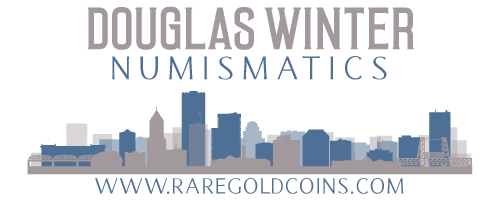New Orleans Gold Coinage
/Since I reopened Douglas Winter Numismatics (DWN) in February 2006, a primary focus of mine has been New Orleans gold coinage. I have focused on this area for a number of reasons. The most obvious is, of course, the fact that my new book on New Orleans gold coinage is expected to be released this summer and it seemed like a natural to drum up interest for the book by selling the appropriate coins. But there are other reasons I have focused on these coins. After twenty years of intense focus on Charlotte and Dahlonega gold, I am a bit bored with these coins. Now don’t get me wrong. I love C&D gold and these will always be a “bread and butter” item in my inventory. But there are many issues that I have seen over and over and, unless a specific coin is very nice, very rare or very interesting, it doesn’t get me all that excited.
But New Orleans coinage is fresher to me at this point in time. I have always handled nice O mint gold but it seems that in the past, I might have handled three Dahlonega half eagles to every New Orleans half eagle.
New Orleans gold also seems like the best value in the 19th century gold coin market. In most cases, New Orleans pieces are quite a bit scarcer than their Charlotte and Dahlonega counterparts and are often priced at twenty or thirty or even fifty percent less.
Another thing I like about New Orleans gold is the great variety. You’ve got coins from the 1840’s and you’ve got coins from the 1900’s. You’ve got tiny gold dollars and you’ve got massive double eagles. You’ve got No Motto and you’ve got With Motto coinage. This level of variation simply doesn’t exist with the other Southern branch mints.
So what’s happened with the New Orleans market in the past three or four months? There are clearly some aggressive new collectors who have entered the market, including a small number who are buying all of the really rare and very high grade pieces they can find. I have had the good fortune of handling at least a dozen Finest Known or Condition Census New Orleans gold coins in the past ninety days and every one of them has sold quickly to long-term collectors.
Prices have started to show some long-overdue appreciation. In the recent Heritage Central States auction, a dealer paid $86,250 for a PCGS MS61 1854-O Three Dollar gold piece which is, by a huge margin, a record price for this date. In the Heritage April Atlanta auction, an NGC MS64 1839-O quarter eagle sold for $34,500 which is also a record price for this date. I have also noted some very strong prices being paid at auction for coins such as high grade (MS63 and better) New Orleans eagles from the 1888-O to 1906-O era.
My overall take on the New Orleans market is that higher grade, affordable pieces are currently in great demand and will show good price appreciation in the coming months. The very high end material is also in strong demand as I wouldn’t be surprised to see Trends and CDN Quarterly being adjusted upwards to reflect these new prices. The areas that I see the greatest potential growth are the “in between” coins: pieces in the $2,500-7,500 range that are not necessarily very rare or super high grade but which are well above average for the date and which are cosmetically appealing. It also appears to me that the medium sized coins (half eagles and eagles) are attracting the most interest with the new generation of New Orleans collectors.
It will be interesting to see if my New Orleans book has the same affect on this market as my Three Dollar gold pieces book had on that market (prices for Threes have doubled in the past two years). If this is the case, I would suggest that people who are buying New Orleans gold coins now are clearly ahead of the curve and might have some nice returns down the road.










